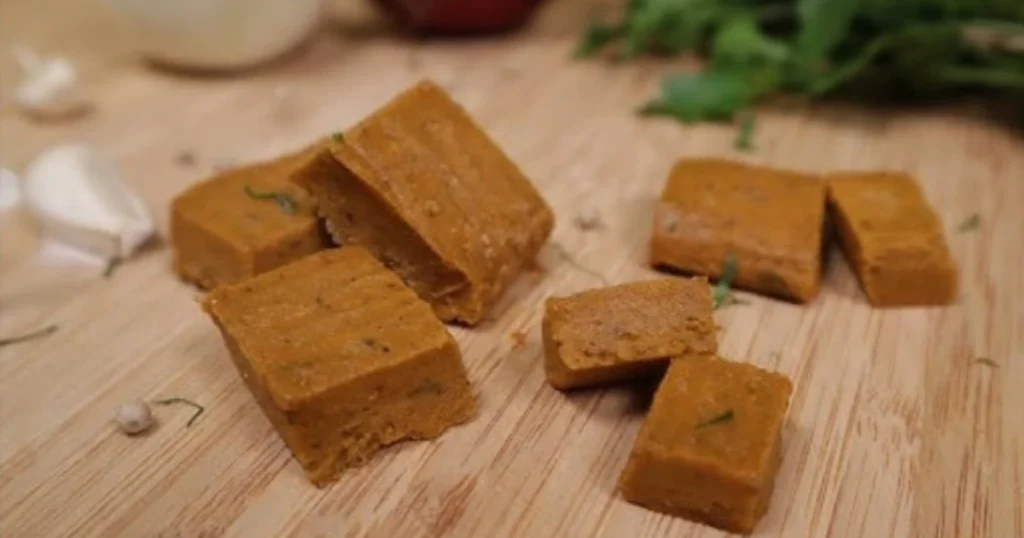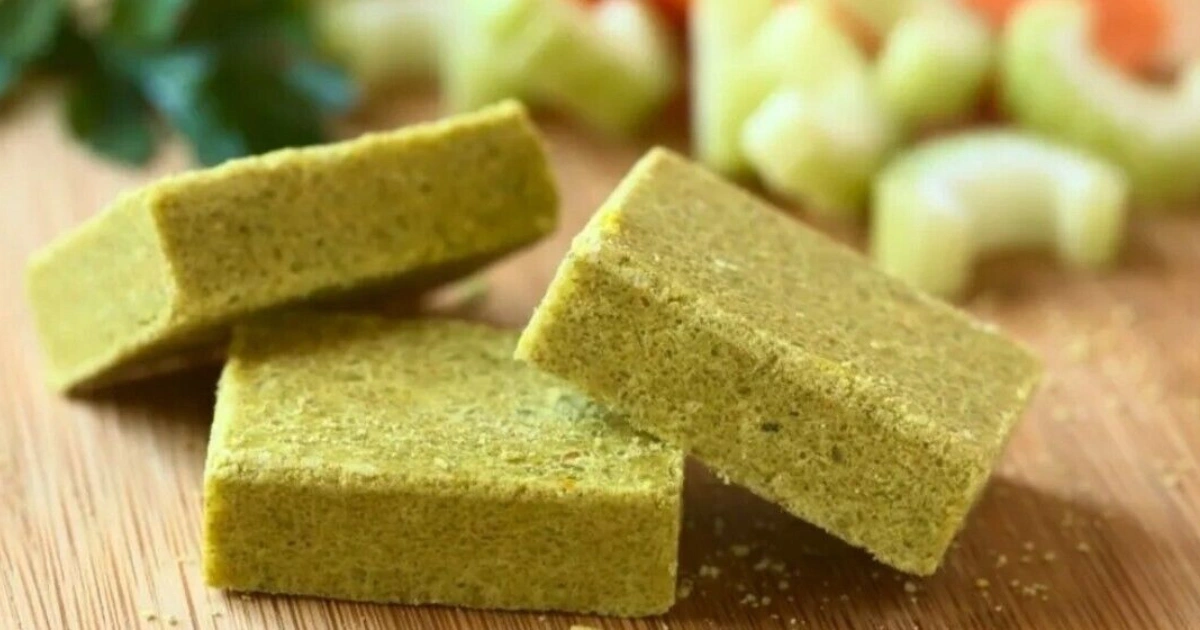Imagine having flavorful broth cubes in your freezer—ready to enhance soups, stews, sauces, or simply dissolve into warming drinks. No preservatives, no yeast extract, no hidden nasties—just real vegetables, salt, and herbs. This guide shows you how to make your own clean, sustainable broth cubes or paste, perfect for everyday cooking.
Enjoy seamless home cooking inspiration and minimalist clean eating kitchen hacks from the start.
| Section | Approx. Word Count |
|---|---|
| Introduction | 150 |
| Ingredients & Prep | 250 |
| Step‑by‑Step Method | 400 |
| Common Mistakes & Fixes | 200 |
| Benefits | 200 |
| Seasonal & Regional Ideas | 150 |
| Tools & Checklist | 100 |
| FAQs (People Also Ask) | 400 |
| Conclusion | 150 |
Key FAQs
- How long do homemade broth cubes last?
- How much salt is needed for safe preservation?
- Are these cubes vegan and additive-free?
- How to use the cubes in recipes?
- Can I freeze and gift them?
Keywords: homemade broth cubes, vegetable stock paste, natural bouillon, DIY stock cubes, low-salt broth cubes, freezing broth cubes
A Welcoming Introduction
Tired of store-bought bouillon cubes loaded with additives? Making your own vegetable broth cubes or paste is simple, wholesome, and incredibly versatile. Using common veggies like carrots, leeks, onions, garlic, and celery—plus salt and herbs—you can create flavor-packed cubes that last months in the freezer. Clean, vegan, customizable, and ideal for nourishing your kitchen without waste or chemicals.
Ingredients & Preparation
Gather the following high-quality ingredients:
- Vegetables: leek, carrot, celery (+ leaves), onion, garlic, shallots
- Salt: coarse sea salt (15–20% of total vegetable weight ensures preservation)
- Herbs: dried thyme, or fresh parsley/rosemary to taste
- Oil: a small amount to grease baking surfaces or molds
Clean and cut your vegetables into uniform, roughly 1‑2 cm pieces. This ensures even cooking and blending. The salt is vital for both flavor and safe shelf life—too little invites spoilage, too much overwhelms taste. Herbs bring aromatic depth, and using locally sourced or organic produce enhances both taste and sustainability.

Step‑by‑Step Method
Follow this sequence to create cubes or paste:
- Blend the vegetables using a food processor or hand blender into a smooth purée.
- Add salt and herbs, then blend again until fully combined and uniform.
- Heat the mixture gently in a pot, stirring continuously until moisture reduces and it thickens into a paste.
- Transfer onto oiled parchment paper or into molds, spreading into an even layer.
- Cool completely, then cut into cubes or spoon into silicone molds or ice cube trays.
- Freeze solid, then transfer to airtight containers or zip‑lock bags, separating layers with parchment to prevent sticking.
- Label and store in freezer (up to 4 months) or refrigerate (several weeks if deeply dried). Properly frozen cubes should retain their shape and flavor when thawed for use.
This method mirrors safe homemade vegetable stock cube processes, often used by frugal cooking bloggers and health‑minded cooks The Spruce Eats+2Frugal Nutrition+2Health, Home, & Happiness+2Intentionally Eat+1Better Homes & Gardens+1The Spruce EatsFood in Jars+4Creative in My Kitchen+4backcountrypaleo.com+4The Modern Nonna+1YouTube+1.
Common Mistakes & How to Avoid Them
Mistake: Too much water in veggies → cubes collapse or spoil.
Fix: Use firmer veggies and cook down thoroughly.
Mistake: Underestimating salt needed → mold risk.
Fix: Measure salt as 15‑20% of total purée weight.
Mistake: Inconsistent chopping → uneven drying.
Fix: Cut pieces evenly or use scraps for blending.
Mistake: Inadequate drying/cooling → sticky or gooey cubes.
Fix: Cool completely and freeze solid before packaging.
Mistake: Forgetting parchment between layers → cubes stick.
Fix: Always separate layers with parchment.
These preventable issues ensure your cubes stay delicious and safe long-term.
Benefits of Making Your Own Broth Cubes
- Full control over ingredients—no additives, preservatives or MSG
- Vegan-friendly, gluten-free, and easy to customize (herbs, garlic, more veggies)
- Reduces food waste by using vegetable scraps or seasonal surplus
- Saves packaging, money, and pantry space
- Adds nutrient-rich flavor naturally to soups, sauces, grains, and marinades
- Convenient: just dissolve a cube in hot water for instant broth
Seasonal & Regional Tips
- Spring/Summer: Use fresh herbs like parsley or wild garlic for brightness.
- Autumn: Add roasted pumpkin or beet puree for deeper flavor.
- Winter: Use leeks, onions, carrots scraps for warming savory base.
- In humid climates, consider using silicone molds or shallow trays to freeze cubes faster.
Adapt recipes based on what’s in-season for optimal taste and low waste.
🧺 Tools & Materials Checklist
- 🥕 Vegetables: leek, carrots, celery, onion, garlic, shallots
- 🧂 Coarse sea salt (15‑20%)
- 🌿 Dried thyme or parsley/rosemary
- 🍳 Large pot or skillet
- 🥄 Food processor or hand blender
- 🧼 Parchment paper, silicone molds, or ice cube trays
- 🧊 Freezer-safe containers or zip-lock bags
- 🔪 Sharp knife and cutting board
Frequently Asked Questions
How long do homemade cubes last?
Frozen cubes are good for up to 4 months; refrigerated cubes (if very firm and salted) can last several weeks The Modern Nonna.
Can I freeze them?
Yes! Freeze first on a tray, then transfer to airtight bags with parchment separation to prevent sticking.
How much salt is needed?
Use 15–20% of the vegetable mass to ensure both flavor and preservation. Too much or too little affects taste and shelf life.
Are these cubes vegan and additive-free?
Absolutely—made entirely from vegetables, salt, and herbs with zero artificial ingredients.
How do I use the cubes in cooking?
Drop one cube into 250–500 ml hot water—or crumble into sauces, grains, or sautés to boost flavor naturally.
Do I need special molds?
No. Use parchment on a tray or silicone/ice cube molds. No dedicated tools required.
Are homemade cubes healthier than store-bought bouillon?
Yes—they contain no MSG, yeast extracts, or hidden sugar. You control the salt and ingredients, making them cleaner and more transparent.
Can I use them as gifts?
Definitely! Pack cubes in jars or freezer bags, bundled nicely—they make thoughtful DIY gifts for cooking enthusiasts.
Encouraging Conclusion
By making your own broth cubes or paste, you’re choosing real ingredients, sustainable practice, and maximum flavor. This simple method empowers you to create additive-free kitchen staples that elevate every dish.
Give it a try—experiment with herbs, salt levels, or seasonal vegetables to make it your own. Share your creations, questions, or variations in the comments below, and spread the joy of homemade flavor.
Need a printable recipe sheet or an image version for your kitchen or social feed? Just let me know—I’d love to help!


برای دوستانی که به دنبال یک راهکار مطمئن برای وریفای حساب در بروکرهای فارکس هستند، پیشنهاد میکنم خدمات شوپی را بررسی کنند. این مجموعه به صورت تخصصی، وریفای قانونی حساب های فارکس را با مدارکی ارائه میدهد که کاملاً معتبر بوده و به نام خودتان صادر میشود. این روش دائمی است و ریسک بلاک شدن حساب شما را به صفر میرساند. کیفیت و پشتیبانیشان واقعاً عالی است.
https://t.me/dragon_money_mani/22
https://t.me/s/dragon_money_mani/26